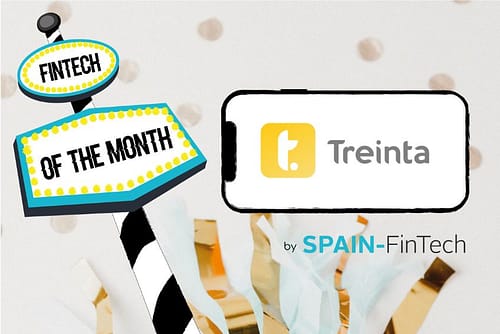Two weeks ago we published the First Part of our article “FinTech Challenger Bank Comparison – Europe’s Top 5”, this week we come with the Second Part, enjoy!
Monzo
Monzo, originally named Mondo, was founded in 2015. This was after CEO Tom Blomfield left Starling Bank, where he was the CTO. He also took 3 other employees with him to venture out on their own. A year later the nimble UK based startup created what was thought to be one of the best crowdfunding campaigns of that time. In March 2016 they managed to secure £1m in under 100 seconds with their campaign on Crowdcube. Monzo has now had a total investment of around $648.1m, its latest valuation is of over £1.24bn .
The FinTech has the aim to become the best current account in the world. Monzo is incredibly customer centric, it was lifted off by crowdfunding and the customers have been heavily involved ever since. Their aim of being a friendly FinTech banking alternative is based upon ultimate transparency, the use of a ‘friendly tone’ and customer involvement. They’ve even created a community where a number of ‘Monzo Meetups’ are organized around the UK by enthusiasts of the startup… They have taken customer involvement to a whole new level.
Monzo currently have over 4m customers, with a weekly sign-up rate of 35k. However, their accounts are only available to UK residents, whereas their competitors tend to be available throughout most of Europe. Furthermore, Monzo also seems to offer the least range of products, besides the standard challenger bank offerings of being able to view your finances concisely, splitting bills and fair exchange rates, they haven’t expanded their offering too much. Monzo used to offer fee-free withdrawals abroad without a limit, but as the customer base grew it became unsustainable. Therefore, in Monzo’s typical transparent and customer-centric style, they gave the power to the people and let them decide what it should do. You can check out the decision making process via this link. The community decided that after a €200 limit a 3% charge would be added. Although Monzo doesn’t offer a wide variety of features, it seems that their simplicity, transparency and customer involvement is what gives them their edge.
- 4 million customers
- The app has an average rating of 4.5/5
N26
N26 is one of the earlier FinTech Challenger banks, it was founded in February 2013 by Valentin Stalf and long-time friend Maximilian Tayenthal. N26 is a German startup, it has never opted for financing via crowdfunding, but it has had some hefty investments. Their most recent Series D funding round raised $819m in February 2021, giving it a whopping valuation of $3.5bn.
The bank has a much more professional feel to it, they haven’t pushed for the ‘friendliness aspect’ in the user interface as much as the other FinTechs have. They have over 7 million customers and are active in 26 across Europe and the U.S. They offer both premium and business accounts, plus their partnership with TransferWise allows for easy/competitive international transfers. However, in the free account there is a flat 1.7% fee for overseas withdrawals. The offering isn’t that expansive, but the professional feel to N26 also adds value.
- 7 million customers
- The app has an average rating of 4.8/5
Revolut
Revolut, the london-based challenger bank, was launched in July 2015. CEO Nikolay Storonsky previously worked in the foreign exchange sector at Credit Suisse. Hence, Revolut had the original motivation of innovating in this sector to minimize the absurd fees that would tend to be hidden. The FinTech startup has its own banking license in the European Union since late 2018 and they have over 15 million users, which is the most out of their competitors. As of April 2018 they’re valued at $10bn, with a total investment of $905.5m.
Revolut seem to be the challenger bank that has given the highest prioritization to the diversification of their offering. The bank offers: the most competitive currency exchange products (however fee-free withdrawals are limited to 200 a month, then a 2% fee), financial literacy advice, gamification styled cashback perks, both overseas medical and phone insurance, an open banking API that allows for B2B integration, ‘group vaults’ for joint savings and lastly, access to 30+ cryptocurrencies on their market! The only major aspect they’re missing are loans/overdrafts! Revolut is available all throughout Europe, Australia, Singapore, Switzerland, Japan and the United States.
- 15 million customers
- The app has an average rating of 4.8/5
Challenger Bank Roundup
So there you have it, a brief summary of Europe’s up-and-coming FinTech challenger banks, each with their slightly different target audiences, aims and offerings. Although Starling appears attractive with its limitless withdrawal fees abroad, plus its interest on account balances, is this model sustainable as their customer base grows to the millions? As Revolut offers such a variety of products and continues to grow, will they become too complicated for the average Joe? Each account can be opened within a few minutes using a smartphone – which one will you choose?



Leave A Comment